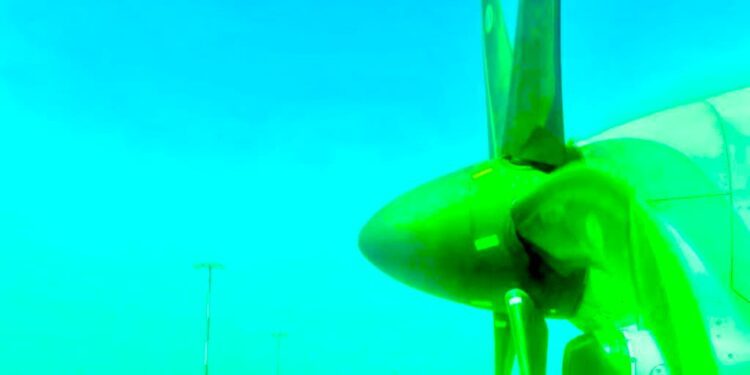The aviation industry is facing a critical moment in its history. The European Commission is currently deciding on the criteria for green investments in the aviation sector, and the outcome of this decision could have far-reaching implications for the future of the industry. If the current draft criteria are adopted, it could lead to one of the biggest acts of aviation greenwashing in living memory.
The draft criteria recommended in 2022 for aviation allows green investments to flow into ‘efficient’ aircraft – even though they will fly exclusively on fossil fuels. This would put a green label over aviation’s business as usual, and allow green investments to flow to a fossil fuel dependent industry. Recent calculations by Transport & Environment (T&E) show that if this criteria is adopted, it could greenwash over 7,000 Airbus aircraft. This represents over 90% of Airbus’ future aircraft orders, despite them still running exclusively on fossil kerosene in the next decade.
The taxonomy also has implications for airlines. Today, an airline’s fleet is barely taxonomy compliant, but allowing these aircraft to be labeled sustainable could greenwash up to 58% of some airlines’ fleet. T&E data shows that over a third of Air France and Lufthansa’s fleets would be considered green by the end of this decade.
The criteria for aviation were based on recommendations made by the Platform on Sustainable Finance. T&E was part of the Platform but, along with other NGOs, left the Platform citing political interference by the European Commission, which acted against evidence despite its legal obligation to follow science-based advice.
T&E is now calling on the European Commission to amend the criteria for aviation, and to ensure that not one cent of green investment goes towards greenwashing the industry. The European Commission must reconsider the criteria for aviation and strictly endorse new technologies with true emissions reduction potential such as zero-emission aircraft and Sustainable Aviation Fuels (SAF). Airbus and Europe’s airlines will fight it tooth and nail, but supporting these will be crucial for the future of green aviation.
The decision made by the European Commission on the criteria for green investments in the aviation sector will have a major impact on the industry’s future. If the current draft criteria are adopted, it could lead to one of the biggest acts of aviation greenwashing in living memory. T&E is calling on the European Commission to amend the criteria for aviation and strictly endorse new technologies with true emissions reduction potential such as zero-emission aircraft and Sustainable Aviation Fuels (SAF). This is essential for ensuring that green investments are not used to greenwash an industry that is still heavily reliant on fossil fuels. President Von der Leyen must take action now to ensure that not one cent of green investment goes towards greenwashing the aviation industry.
FAQ
Q1. How electric car chargers work?
A1. Electric car chargers work by connecting to an electrical outlet and providing power to the car’s battery. The charger then converts the electricity into a form that the car’s battery can use.
Q2. What electric car has the longest range?
A2. The Tesla Model S has the longest range of any electric car currently on the market, with a range of up to 370 miles on a single charge.
Q3. How electric car batteries are recycled?
A3. Electric car batteries are recycled by breaking them down into their component parts and then separating out the metals, plastics, and other materials for reuse. The metals are melted down and reused in new products, while the plastics and other materials are recycled into new products.




